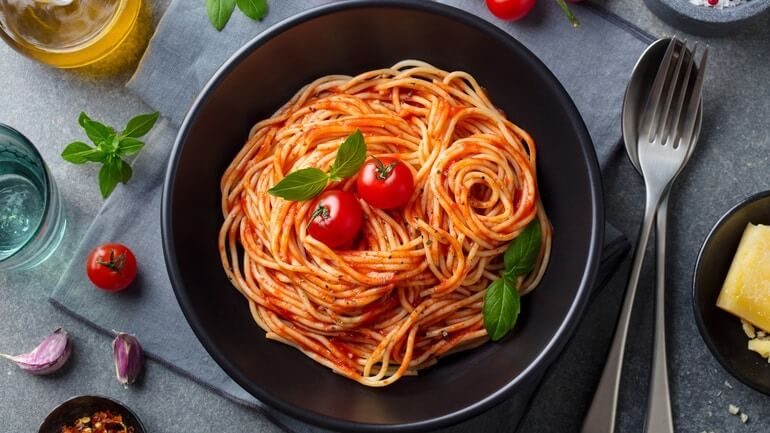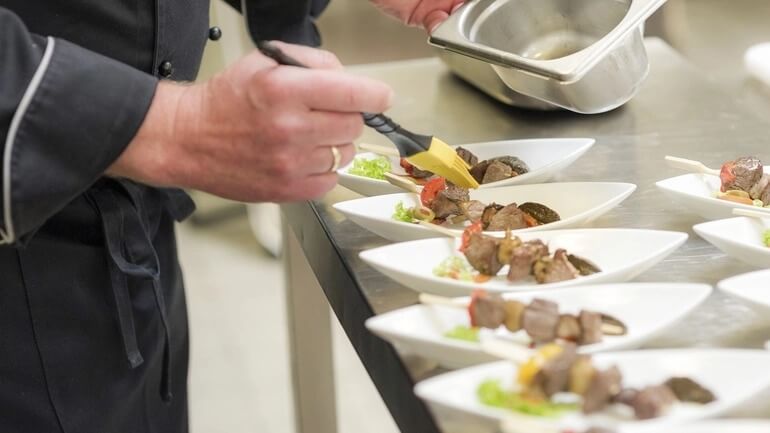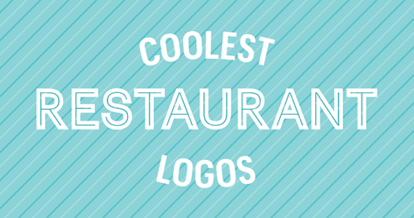Restaurant portion sizes are significantly larger than they were just a few decades ago. In fact, one study involving chefs found that while 76% thought they were serving “regular” sized portions of steak and pasta, these servings were actually 2 to 4 times larger than the serving sizes recommended by the U.S government.
Generous restaurant serving sizes are often welcomed by customers and seen as a good deal because they provide more food for less money than you’d get at a fine dining restaurant, for instance. But, bigger isn’t always better. Overly large portions can lead to food waste in restaurants and put a dent in your bottom line as a restaurateur.
In this article, we’re serving up details on:
- Why restaurants dish out big portions
- The drawbacks of large restaurant serving sizes
- 4 benefits of restaurant portion control
- Tips for offering smaller meals
Let’s dig in.
Why Do Restaurants Serve Large Portions?
In short, doling out bigger restaurant serving sizes helps businesses justify higher price points on their menus. But how did this practice get started?
“Following World War II, agricultural policy in the U.S. expanded. Farmers were able to grow food more cheaply by using fertilizer, pesticides, and herbicides. In the 1970s, the government began subsidizing farmers to grow more food. Over time, companies have increased their serving sizes to increase their profits, and we all caught on,” says this article by USA TODAY.
These days, it’s easy for restaurants to make portions bigger without actually spending more on ingredients by bulking up dishes with low-cost items like pasta. In other words, a heaping bowl of spaghetti doesn’t cost much more to serve up than a smaller bowl, but increasing restaurant portion sizes means restaurateurs can charge guests more and rake in higher profits.
The Drawbacks of Big Portion Sizes

While using big portions to raise menu prices may seem like a savvy business move, there are quite a few drawbacks for restaurateurs.
1. Creates Food Waste
When you’re buying massive amounts of ingredients in order to serve large restaurant portion sizes, you can quickly run into trouble with food waste. A lot of items don’t make for great leftovers – no one wants day-old French fries – which means you could find yourself contributing to the 33 billion pounds of food waste generated by American restaurants per year. This comes with a hefty cost, at $162 billion per year industry-wide..
2. Compromises Quality
On top of the moral considerations around food waste, you have to think about quality when you’re deciding on the restaurant portion sizes you’ll serve because it could impact your reputation.
Bulking up a dish with low-cost ingredients often reduces its overall quality. Your guests could notice this and decide to eat elsewhere next time they’re out for dinner.
In contrast, serving a standard portion size in restaurants can help you avoid this problem, and the risk of damage to your reputation. After all, in the world of social media, news of disappointing meals spreads like wildfire.
3. Doesn’t Appeal to All Guests
Many customers don’t like the idea of being served a gargantuan meal that they know they’ll never be able to finish. And not everyone comes to a restaurant expecting enough leftovers to take home with them.
As consumer preferences change, even restaurants that are known for big portions like The Cheesecake Factory have started to offer smaller sizes. Implementing a standard portion size in restaurants instead of supersizing your meals can win you brownie points with your guests.
The Benefits of Reducing Restaurant Portion Sizes
When it comes to the food you serve your guests, portion size matters. Here are four benefits to putting restaurant portion control on the menu.
1. Promotes Quality Control
You’ve worked hard to get your restaurant to where it is today, and you want to be known for delicious, quality food – not for inconsistency or cutting corners with ingredients. Standardizing and monitoring your restaurant portion sizes empowers your kitchen staff to ensure diners always receive the portions and quality they’ve come to expect from you, keeping your brand in your customers’ good books.
Prioritizing a consistent, high quality guest experience can also do wonders for your bank account. Research shows businesses that work to improve customer experience have the potential to see an 80% boost in revenue. Not to mention, happy guests are your most powerful advocates when it comes to spreading the word about your restaurant, and their positive reviews won’t cost you a dime.
2. Keeps Food Costs in Check
In the wake of COVID-19 and with inflation on the rise, it’s safe to say most restaurateurs are looking to keep costs down in ways that won’t affect the quality of the meals they serve or the guest experience they offer. Fortunately, creating the same great menu items with smaller portion sizes can result in a higher profit margin per entree, meaning you don’t need to panic and lay off any of your employees.
Considering that restaurants spend between 20 and 40% of their revenue on food, reducing your portion sizes and the amount of ingredients you need to purchase every week is a smart move. Gaining a clear understanding of your food cost percentage can help you see past the myth of bulking up dishes to raise menu prices and ultimately help you master your restaurant’s finances. Familiarize yourself with industry benchmarks for food costs to see whether you’re overspending and implement restaurant portion control to save big bucks.
3. Reduces Food Waste
We’ve already painted a pretty grim picture of food waste in America. So, how can your restaurant stop contributing to the problem and become part of the solution? One way is to reduce your portion sizes. Offering standard portion sizes in restaurants helps eliminate excess food waste in the kitchen as well as in the dining room, where diners often struggle to finish meals that are too big.
What exactly is a standard portion size? While there is no blanket answer, since people’s dietary needs vary, here’s a rough guide according to Healthline:
- Vegetables or salad: half a plate
- High-quality protein (meat, fish, eggs, dairy, tofu, and beans): quarter of a plate
- Complex carbs (whole grains and starchy vegetables): quarter of a plate
- High-fat foods (butter, cheese, oils): half a tablespoon
4. Promotes a Diverse Inventory
Your restaurant menu will always offer tried-and-true guest favorites (housemade burger, anyone?), but you’ll likely still want to mix your offerings up from time to time, especially at the start of each new season. The good news is that serving smaller restaurant portion sizes allows you to buy a wider variety of ingredients rather than a bulk, limited selection. This will help prevent your customers from getting bored with your menu.
Diversifying your inventory can also enable you to bring in local ingredients and support farmers and other food producers in your community. Building these kinds of relationships is not only good in and of itself, it’s also an excellent branding strategy in a time where people are increasingly focused on supporting homegrown businesses (pun intended). Sourcing your inventory from nearby can help you cultivate a sustainable farm-to-table approach at your restaurant.

Tips for Offering Smaller Portions
The case for cutting back on your portion sizes is strong, but how can you get started? Here are four simple tips to help guide the way.
1. Make Time for Staff Training
Training your kitchen team to serve smaller, standardized portions is your first line of defense in the fight against food waste. And, having the right restaurant equipment to help with portion control will make all the difference to your success. Purchase portioning tools like commercial scales, and teach your kitchen staff how to weigh items like deli meats and cheeses into the correct portion sizes.
2. Invest in Proper Plateware
A hodgepodge of plateware styles may work in a college student’s home, but there’s no place for this kind of disorganization in a restaurant kitchen. Using standardized utensils and plateware (for example, serving spoons or ramekins that hold set amounts of sides like guacamole) is key to keeping portion sizes from becoming too big. But don’t worry, you can always offer refills on the guac if need be.
3. Use Creative Plating Techniques
Let your kitchen staff have fun trying out creative food plating techniques. This tactic puts the focus on the look of a dish instead of the size. It can also influence diners’ perception of their meals. Well-presented food can leave a better taste in guests’ mouths – 18% better, to be exact, according to numerous studies.
4. Adjust Your Menu
Tweaking your restaurant menu descriptions is a great way to empower your customers to choose how much food they’d like to order. Offer a variety of options, and create categories for smaller, shareable dishes. This way, your guests won’t feel pressured to order a meal that’s mismatched to their appetite, only to leave half of it behind on the table.
We’ve now covered why restaurants dish out large portions as well as the disadvantages of big portion sizes. We’ve also explored four benefits of restaurant portion control to your restaurant’s reputation and bottom line, and you have four tips in your toolkit for offering smaller serving sizes. Now go tackle that dinner rush with confidence! After all, as the saying goes, less is more.
Download our free inventory template
Sign up for our free weekly TouchBistro Newsletter







